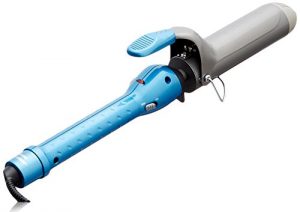
So you’ve been considering adding a curling iron to your hair styling routine, but you’re feeling a little overwhelmed with the options out there. Don’t worry, we’ve got you covered! In this article, we’ll be exploring the key differences between professional and standard curling irons. Whether you’re a seasoned stylist or a beginner looking to up your hair game, understanding these differences will help you make an informed decision and achieve the perfect curls you’ve always wanted. Get ready to take your hair styling skills to the next level!
Size and Shape
Barrel Size
When it comes to choosing a curling iron, one of the first factors you should consider is the size of the barrel. The barrel size determines the type of curls or waves you can create. Standard curling irons typically have a barrel size ranging from 0.5 to 1 inch, which is perfect for everyday use and creating classic curls. On the other hand, professional curling irons often have larger barrel sizes, ranging from 1.25 to 2 inches, allowing you to create loose, voluminous curls or beachy waves.
Barrel Shape
The shape of the barrel also plays a crucial role in the type of curls you can achieve. Standard curling irons typically have a cylindrical barrel, which produces traditional, uniform curls. However, professional curling irons often feature a tapered or conical barrel. This unique shape allows for more versatility in styling, as it creates curls of different sizes and adds more natural-looking texture to your hair. So, if you’re looking for more variety in your hairstyles, a professional curling iron with a tapered barrel might be the way to go.
Temperature Control
Heat Settings
Temperature control is essential when it comes to curling irons, as different hair types require varying heat levels to achieve the desired results. Standard curling irons typically offer a limited number of heat settings, usually ranging from low to high. This simplicity can be perfect for beginners or those with fine or thin hair that doesn’t require much heat. However, professional curling irons often come with more precise heat settings, allowing you to adjust the temperature in smaller increments. This is beneficial for those with thick, coarse, or hard-to-style hair that require higher heat levels for efficient curling.
Heat Distribution
The way a curling iron distributes heat throughout the barrel is another factor to consider. Standard curling irons usually have less advanced heat distribution, which can result in uneven curls or even heat damage to your hair if not used correctly. On the other hand, professional curling irons often incorporate advanced heat distribution technologies. These technologies ensure that the entire barrel is heated evenly, preventing hot spots and ensuring consistent, long-lasting curls. When it comes to heat distribution, professional curling irons undoubtedly have the upper hand.
Material
Ceramic
Ceramic is a popular material used in curling irons for its ability to distribute heat evenly and retain heat for longer periods. Standard curling irons often feature ceramic-coated barrels, which provide a smooth surface for effortless gliding and reduce the risk of hair damage. Professional curling irons, on the other hand, often use pure ceramic barrels, offering enhanced heat distribution and superior styling results. Ceramic curling irons are suitable for all hair types, as they provide consistent heat without causing excessive damage.
Tourmaline
Tourmaline is a gemstone-infused material commonly found in professional curling irons. It has unique properties that contribute to smoother, shinier, and less frizzy curls. When heated, tourmaline emits negative ions, sealing the hair cuticles and minimizing frizz. Professional curling irons with tourmaline barrels are ideal for those with frizzy or unruly hair, as they help to create sleek, polished curls while reducing static and flyaways.
Titanium
Titanium is a lightweight and highly durable material often used in professional curling irons. It heats up quickly, allowing for faster styling, and provides excellent heat conductivity for consistent and even curls. Titanium curling irons are suitable for all hair types, especially those with thick or coarse hair that requires higher heat levels. Additionally, the smooth surface of titanium barrels helps reduce friction and snagging, resulting in smoother and shinier curls.
Gold
Gold-plated curling irons are considered a luxury option, often found in professional-grade styling tools. The gold plating provides even heat distribution and prevents hot spots, resulting in uniform curls. Additionally, the gold coating helps to seal the hair cuticles, resulting in smoother, shinier, and longer-lasting curls. However, it’s important to note that gold-plated curling irons tend to be more expensive and may not necessarily offer significant advantages over other high-quality materials like ceramic or titanium.
Chrome
Chrome barrels are commonly found in standard curling irons. They offer good heat distribution and are generally less expensive compared to other materials. However, chrome barrels may not provide the same level of heat conductivity and durability as materials like ceramic, tourmaline, or titanium. If you’re on a budget or only use a curling iron occasionally, a chrome barrel might be a suitable option for you. However, if you’re looking for advanced features and superior styling results, it’s worth considering curling irons with other materials.
Teflon
Teflon-coated curling irons are designed to provide a smooth and non-stick surface, preventing hair from sticking or snagging during styling. This coating makes it easier to glide the hair through the barrel, resulting in less damage and tangles. Teflon coating is commonly found in standard curling irons, as it offers basic heat protection and ease of use. However, professional curling irons typically don’t feature Teflon coatings, as they prioritize advanced heat distribution and quality materials over non-stick properties.
